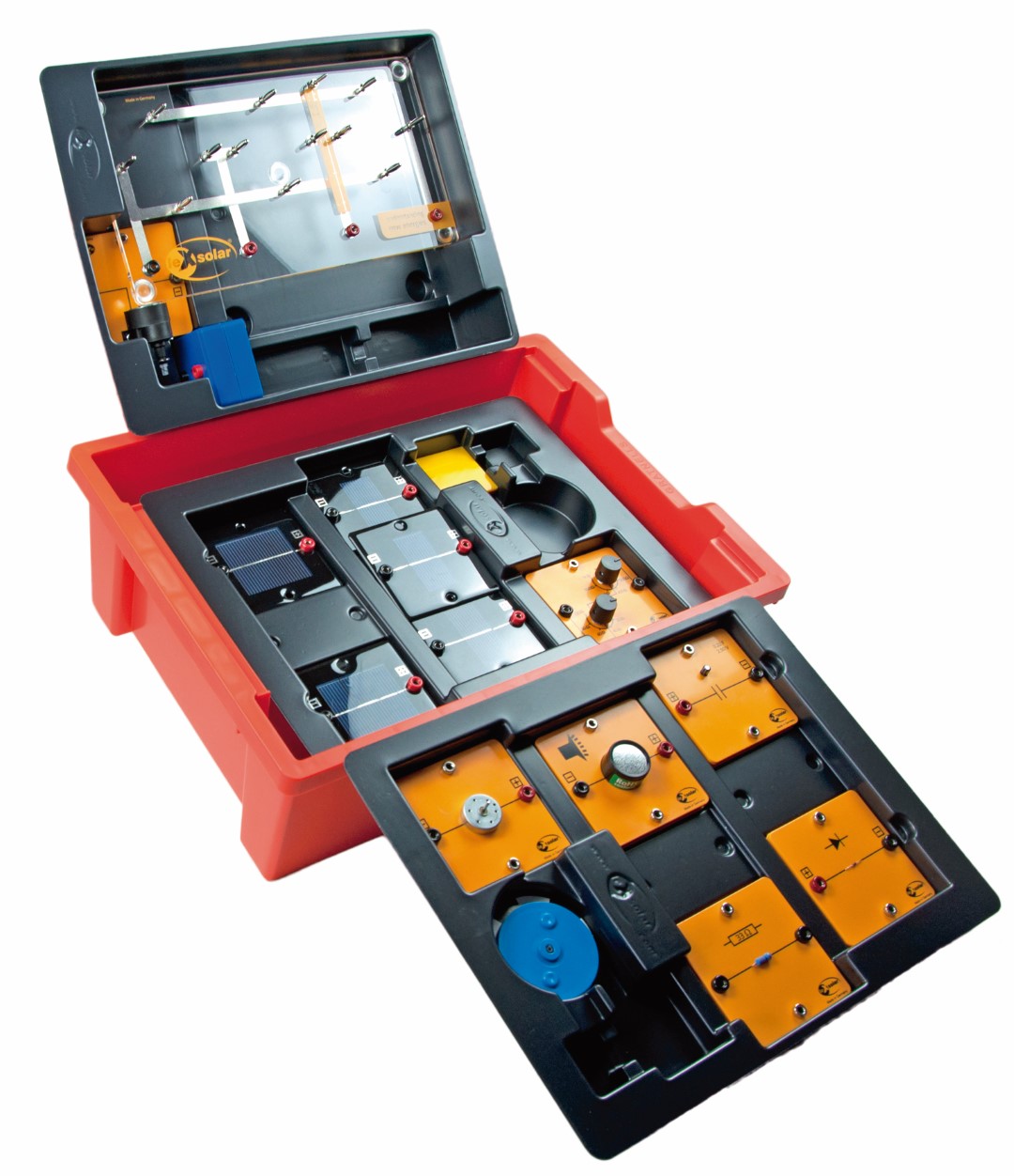Function and Applications
Description:
Correlating school physics with practical usage of the photovoltaic cells is a specialty of this system. These unique didactic innovations are the premier choice when it comes to experiments related to solar energy since it has won the Worlddidac Award. The system has been conceived in such a way that most experiments can be conducted in normal room lighting. An external power supply is not necessary for these experiments. The leXsolar lighting module (included) is required only for a few experiments - which can be operated with a student?s power supply.
Experiments:
1. Understanding the leXsolar base unit
2. Optical illusions
2.1 The basic setup for experiments with the color disks
2.2 Color qualities
2.3 Additive color mixing
2.4 Optical illusions with the Benham-disk
2.5 Optical illusions with the relief-disk
3. Experiments about different kinds of radiation
3.1 The influence of diffuse radiation on solar cell power (qualitative)
3.2 The influence of direct radiation on solar cell power (qualitative)
3.3 The intensity of albedo-radiation of different substances (qualitative)
4. Dependence of solar cell power on its area
5. Dependence of solar cell power on angle of incidence of light
5.1 Dependence of solar cell power on angle of incidence of light (qualitative)
5.2 Dependence of solar cell power on angle of incidence of light (quantitative)
6. Dependence of solar cell power on illuminance
6.1 Dependence of solar cell power on illuminance 1 (qualitative)
6.2 Dependence of solar cell power on illuminance 2 (qualitative)
6.3 Dependence of solar cell power on illuminance 1 (quantitative)
7. Dependence of solar cell power on temperature
8. Dependence of solar cell power on frequency of incident light
9. The diode character of a solar cell
9.1 The dark characteristics of a solar cell
9.2 The internal resistance of a solar cell depending on reverse or forward biasing or in the dark or under illumination
10. The I-V-characteristics of a solar cell
10.1 Dependence of solar cell power on load
10.2 The I-V-characteristics and filling factor of a solar cell
10.3 Dependence of I-V-characteristics of a solar cell on illuminance
11. Behavior of voltage and current in series and parallel connections of solar cells
11.1 Behavior of voltage and current in series and parallel connections of solar cells (qualitative)
11.2 Behavior of voltage and current in series and parallel connections of solar cells (quantitative)
12. Behavior of voltage and current of series and parallel connection of solar cells depending on shading
12.1 Behavior of voltage and current of a series connection of solar cells depending on shading (qualitative)
12.2 Behavior of voltage and current of a series connection of solar cells depending on shading (quantitative)
12.3 Behavior of voltage and current of a parallel connection of solar cells depending on shading (quantitative)
13. Simulation of a stand-alone grid with photovoltaic station
14. Characteristic graphs of a capacitor
14.1 Characteristic graphs of a capacitor charged by a solar cell
14.2 Discharging process of a capacitor
15. Practical experiments
15.1 Determination of efficiency of some
with photovoltaic station14. Characteristic graphs of a capacitor
14.1 Characteristic graphs of a capacitor charged by a solar cell
14.2 Discharging process of a capacitor
15. Practical experiments
15.1 Determination of efficiency of some
